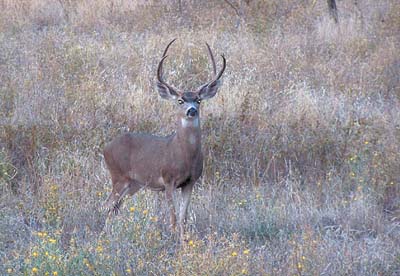
TRACIE CONE
FRESNO
The country’s financial tumult is exacting a toll on wildlife in California and Florida, where game wardens are seeing a surge in poaching for money as the economy declines.
In California, where officials are calling 2008 “The Year of the Extreme Poacher,” state records show that arrests for the illegal killing of game birds, deer, bear, fish and abalone, which fetch $100 a pound, have risen dramatically since 2005.
One man was arrested four times for poaching lobsters in a La Jolla marine conservation area. A Gilroy man was caught with 335 waterfowl in his freezers, including protected species. And two people were arrested in Sacramento for allegedly poaching and selling deer to a meat market for $150 each.
With the struggling economy, some people are desperate enough to seek profits by poaching species that can be sold on the black market to consumers, retailers and restaurants. And officials say increased poaching here and in Florida may be a harbinger for the rest of the country.
“Most trends in the fish and wildlife world seem to start in Florida and California,” said Lt. Col. Jim Brown of the Florida Fish and Wildlife Conservation Commission.
Florida wildlife officials say that poaching arrests are down because of budget-related staffing cuts but poaching for sale has taken off during the recession. In recent months, authorities nabbed two men in Central Florida with 20 dead does and stags, and three men in the Florida Keys with 771 undersized lobster tails.
“It’s all about money,” Brown said.
Poaching is not a federal offense, so U.S. Fish and Wildlife Service officials say they do not keep national statistics.
While wildlife authorities in New York have not noticed any increase in poaching, Michigan officials are seeing increased demand for legal hunting permits for female deer. “We were hearing a lot more people were out trying to take as many as they could to stock their freezers,” said Mary Dettloff, spokeswoman for Michigan’s Department of Natural Resources, adding that figures for 2008 are not yet available.
California officials acknowledge the pickings here are particularly easy because there are only 374 game wardens to patrol this state with thousands of miles of mountains and seashore.
“It’s like the perfect storm,” said Nancy Foley, chief of the California Department of Fish and Game’s law enforcement division. “The thing about wildlife, like abalone, is that we don’t know what its breaking point is.”
Although this year’s California poaching statistics are not yet compiled, records show that between 2005, when the economy was relatively good, and 2007, when it was faltering, the number of poaching-related violations increased from 14,150 to 17,840. Illegal bear kills alone went from nine to 49.
“They’re just taking as many as they can to make money,” said Patrick Foy, a game warden who has been monitoring the increase.
Poaching is a misdemeanor in California, punishable by up to a year in jail and a $10,000 fine, though abalone violations can be four times higher. Yet officials say some repeat offenders seem undeterred.
One of the most lucrative creatures sought by repeat offenders is the abalone, a prized mollusk sought for its delicate flavor. Abalone harvesting is off limits south of the San Francisco Bay, but game wardens say that did not stop Ty Lieu and Hoa Pham, who took advantage of an extreme low tide Nov. 13 to pry dozens of abalone from rocks along the Big Sur Coast 200 miles south of the cutoff line.
Officials said it was Lieu’s fourth arrest for abalone poaching, a crime for which he had two prior convictions, and Pham’s fourth offense on a fish and game violation. He was convicted once. The two are scheduled to be arraigned on the new charges this month.
In Sacramento, wardens arrested the owner of a meat market for allegedly purchasing deer from two people who were found with at least 11 deer at their home, along with abalone and squirrels.
California’s rich waterfowl population is suffering more poaching than it has for a century, officials said.
“Not since the market poaching days of the early 1900s have we seen waterfowl poaching of this scope,” Foley said of one recent case.
Sandhill Cranes and Tundra Swans were among hundreds of endangered, threatened and protected birds that wardens found in the freezers of Peter Ignatius Ciraulo, who pleaded no contest in November to three violations. He was placed on two years probation and ordered to pay a $7,105 fine and perform 100 hours community service.
Not all killing is for profit, wardens said. Jesse Cal Rodes, 25, whose truck sported the bumper sticker “Kill All the Furry Creatures,” was fined $10,000 and served 90 days in jail for killing 26 deer. Authorities say he tacked the tails to his garage wall, ate some deer and let the carcasses of others rot on his property near Sonora.
Fish and Game’s enforcement chief has seen evidence of nine illegal deer kills in the woods near her Sacramento-area home.
“A lot of poachers would go into the same category as drug dealers and automobile thieves; they’re tenacious,” Foley said. “It’s really frightening to see what’s been happening.”









